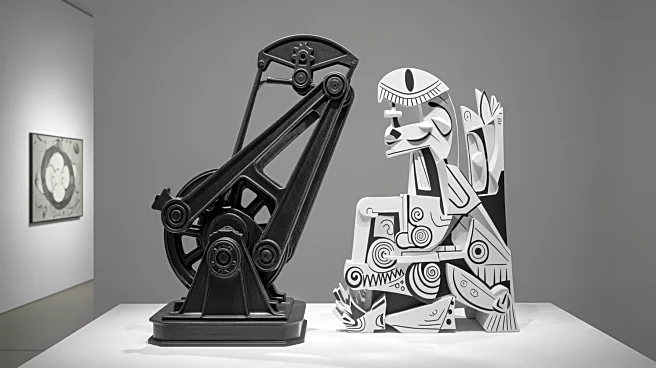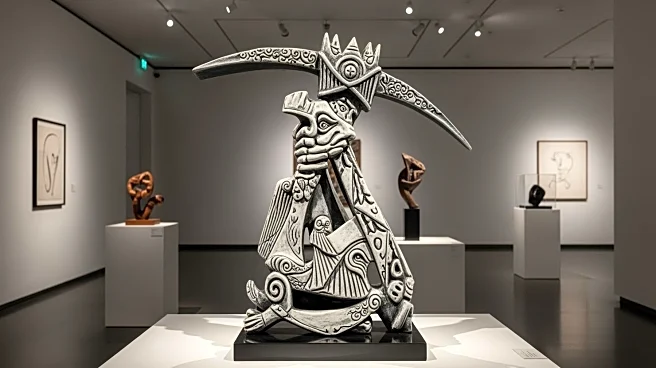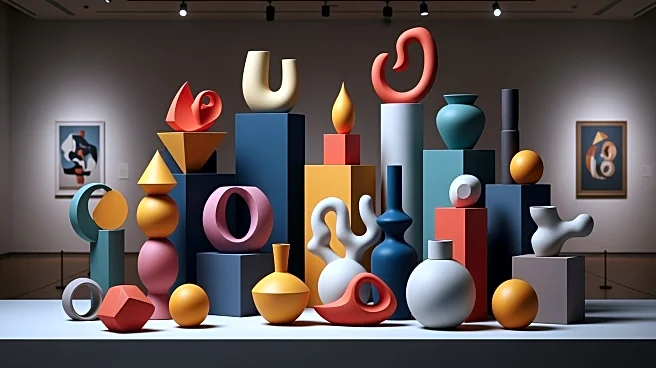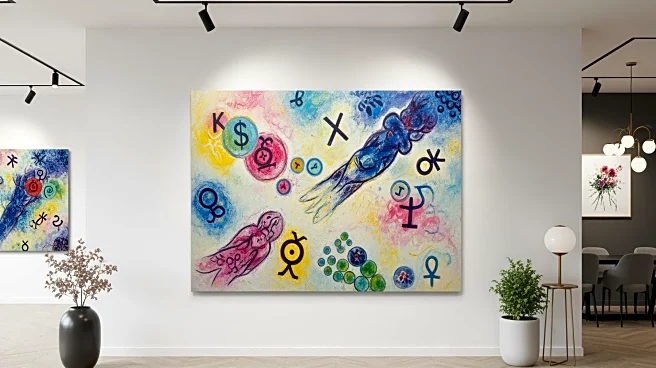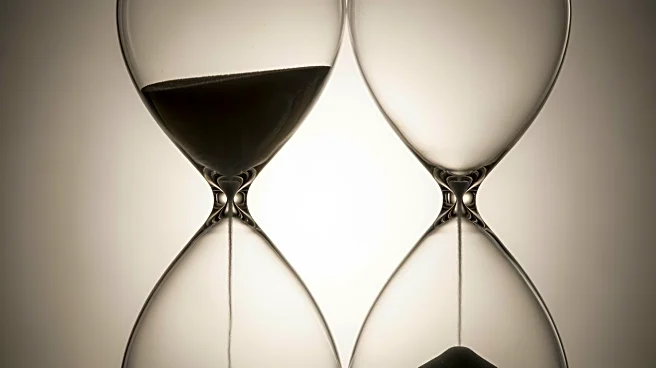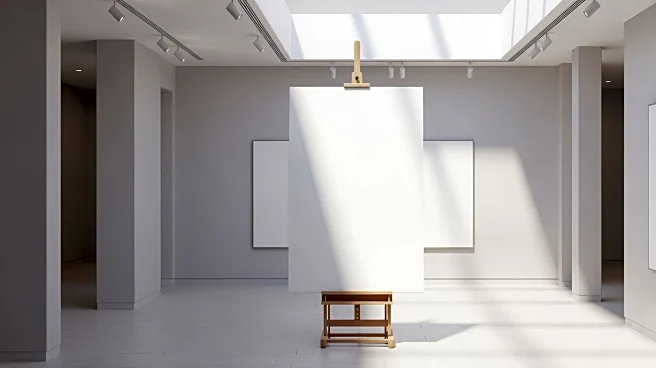What's Happening?
The Kin Museum of Contemporary Art in Kiruna, Sweden, is hosting an exhibition titled 'A Hole in the Real,' featuring works by Pablo Picasso and contemporary artist Dora García. The exhibition explores
the intersection of art and industry, particularly focusing on the legacy of the state-owned mining company LKAB. García's work draws inspiration from Picasso's cubism, classicism, surrealism, and his anti-fascist stance, while also addressing the dual role of LKAB as both an educator and exploiter. The exhibition revisits the 1965 Picasso exhibition in Kiruna, which was a significant cultural event, and aims to reflect on the role of culture and art in modern society.
Why It's Important?
This exhibition is significant as it highlights the ongoing dialogue between art and industry, and the role of cultural institutions in shaping public discourse. By revisiting Picasso's work in the context of a mining town, the exhibition challenges viewers to consider the impact of industrialization on cultural heritage and the environment. It also underscores the importance of making art accessible to diverse audiences, as demonstrated by the original 1965 exhibition. The collaboration between various Swedish cultural institutions and the mining company reflects a broader trend of integrating art into public spaces and discussions.
What's Next?
The exhibition will run until April 19, 2026, providing ample opportunity for visitors to engage with the themes presented. The Kin Museum will continue to host artists in residence, such as Bella Rune and Jonas Nobel, who will develop new works inspired by the transformation of Kiruna due to the expansion of the iron ore mine. These ongoing projects will further explore the relationship between art, architecture, and urban development, offering new perspectives on the future of cultural spaces in industrial settings.
Beyond the Headlines
The exhibition raises ethical questions about the role of state-owned enterprises in cultural production and the potential exploitation of cultural heritage for commercial gain. It also prompts reflection on the sustainability of cultural projects in regions affected by industrial activities. By engaging with these complex issues, the exhibition contributes to a broader conversation about the responsibilities of cultural institutions in addressing social and environmental challenges.


